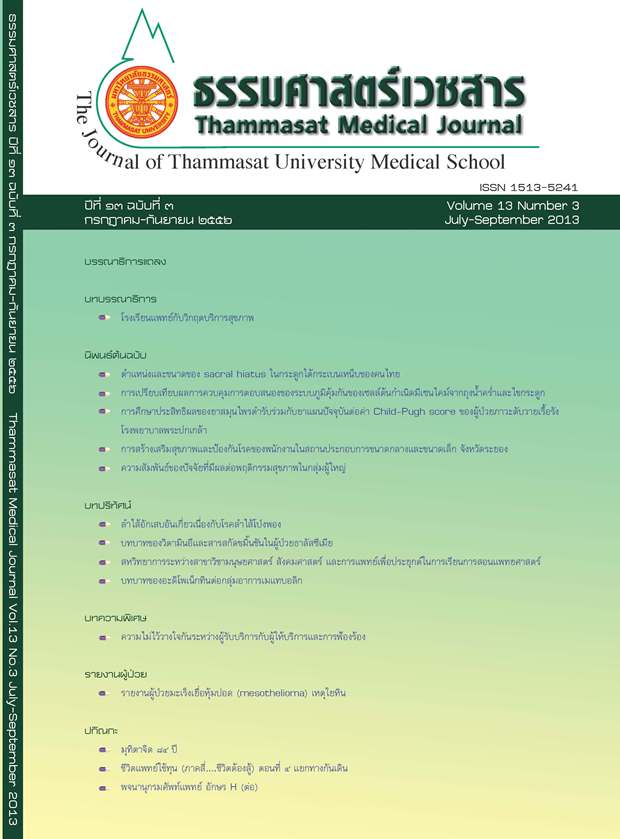The position and size of the sacral hiatus in Thai dry human sacra
Keywords:
Sacral hiatus, Sacrum, Caudal epidural anesthesiaAbstract
Introduction: To study the shape, position and size of the sacral hiatus in Thai dry human sacra.
Method: The present study was carried out on 235 dry human sacra, 163 males and 72 females, in Facultyof medicine, Chiangmai and Thammasat university. The ages of dry human sacra ranged from 20–90years. The shape, position and size of sacral hiatuses were observed. The inter-cornual distance,the distance from sacral hiatal apex to the midpoint of base and the lower border of the 5th sacralvertebra were measured. Data were statistically analyzed and the difference of mean distance wasperformed by using unpaired t-tests. A p-value of less than 0.05 was considered significant.
Results: The most common shapes of sacral hiatus were inverted U (54.47%), inverted V (19.57%), irregular(11.06%) and elongated (6.81%). The apex and base of sacral hiatus were commonly found at thelevel of the 4th (62.98%) and the 5th sacral vertebrae (76.6%), respectively. The average distance fromsacral hiatal apex to the midpoint of base was significantly different (p = 0.0002) between male (19.89± 9.05 mm) and female (15.63 ± 5.29 mm). The average distance from sacral hiatal apex to thelower border of the 5th sacral vertebra was significantly different (p = 0.002) between male (26.44± 11.49 mm) and female (21.75 ± 8.23 mm). The mean inter-cornual distance was no significantdifference between male and female.
Discussion and Conclusion: The inverted – U, inverted – V, elongated and agenesis shapes of sacral hiatus were found in 81.28percent of sacra (male 77.30% and female 90.28%). Thus, this study suggests a high chance ofsuccess for the caudal epidural anesthesia in Thai patients, especially in females.



